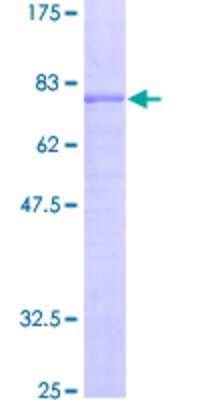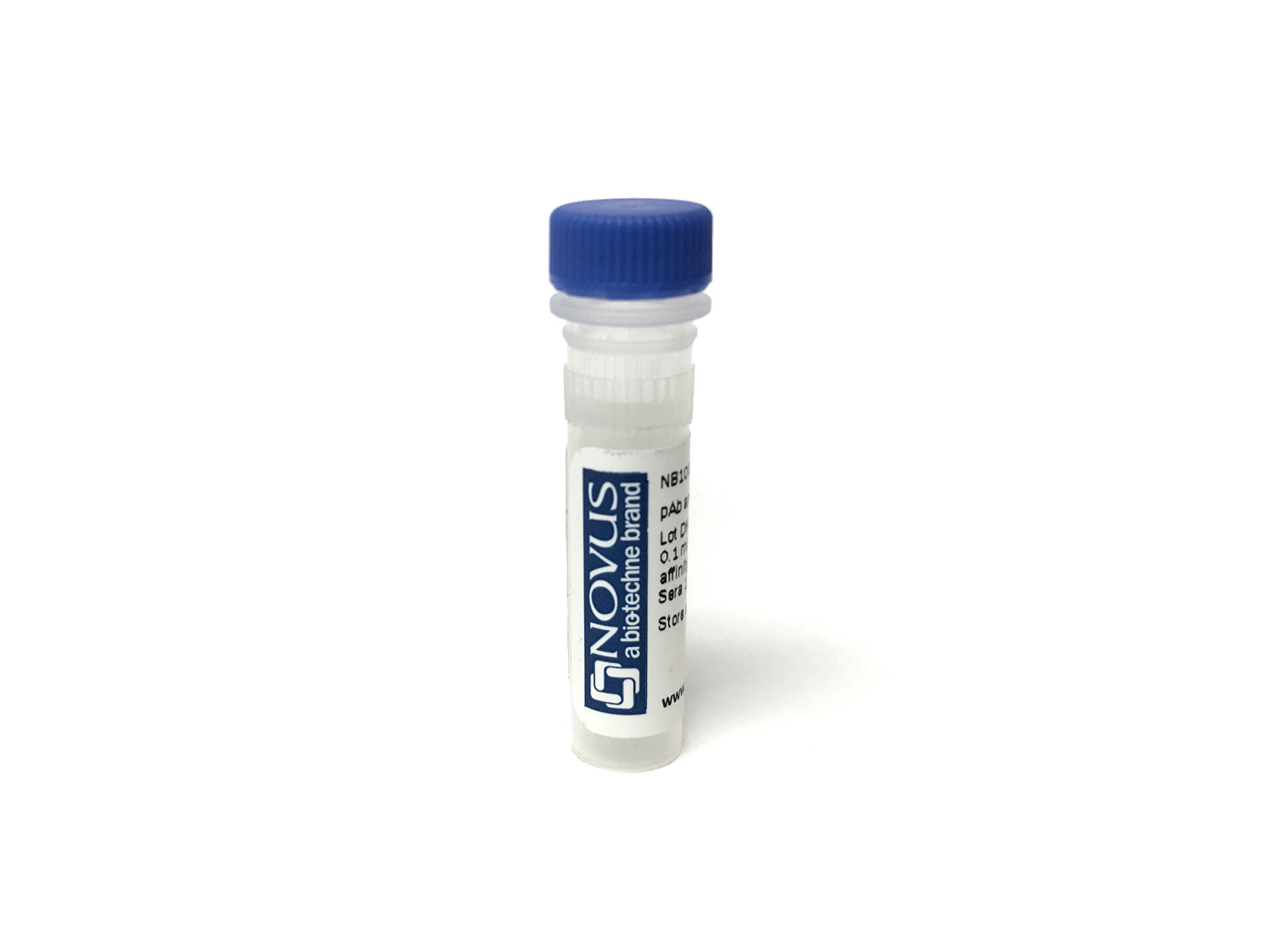GABA-A R alpha 5 Products
GABA A (γ-aminobutyric acid-type A) receptors are members of the cysteine-loop family of neurotransmitter-gated ion channels. GABA binding to A-type receptors induces anion-selective ion channel opening. These receptors are the principal fast inhibitory neurotransmitter receptors in the CNS. GABA A receptors are heteropentamer combinations of seven subunit types; α, β, γ, δ, ε, θ, and π. Three subunits, α, β, and γ, have at least three separate gene products in mammals, and typical GABA A receptors have some combination of α, β, and γ subunits.
The rat α5 isoform is a 439 amino acid (aa), 4 transmembrane protein with two terminal extracellular regions. The ligand-binding region is in the N-terminus (aa 25 - 232). The α5 subunit is unusual in that it contains an N-terminal histidine which renders it very sensitive to zinc. It is also associated with extrasynaptic sites and seems to mediate tonic inhibition in hippocampal neurons.
15 results for "GABA-A R alpha 5" in Products
15 results for "GABA-A R alpha 5" in Products
GABA-A R alpha 5 Products
GABA A (γ-aminobutyric acid-type A) receptors are members of the cysteine-loop family of neurotransmitter-gated ion channels. GABA binding to A-type receptors induces anion-selective ion channel opening. These receptors are the principal fast inhibitory neurotransmitter receptors in the CNS. GABA A receptors are heteropentamer combinations of seven subunit types; α, β, γ, δ, ε, θ, and π. Three subunits, α, β, and γ, have at least three separate gene products in mammals, and typical GABA A receptors have some combination of α, β, and γ subunits.
The rat α5 isoform is a 439 amino acid (aa), 4 transmembrane protein with two terminal extracellular regions. The ligand-binding region is in the N-terminus (aa 25 - 232). The α5 subunit is unusual in that it contains an N-terminal histidine which renders it very sensitive to zinc. It is also associated with extrasynaptic sites and seems to mediate tonic inhibition in hippocampal neurons.
| Reactivity: | Mouse, Rat |
| Details: | Rabbit IgG Polyclonal |
| Applications: | WB |
| Reactivity: | Mouse, Rat |
| Details: | Rabbit IgG Polyclonal |
| Applications: | IHC, WB |
Recombinant Monoclonal Antibody.
| Reactivity: | Human, Mouse, Rat |
| Details: | Rabbit IgG Monoclonal Clone #JB34-19 |
| Applications: | IHC, WB, ICC/IF |
| Reactivity: | Human, Mouse, Rat |
| Details: | Mouse IgG1 Monoclonal Clone #S415-24 |
| Applications: | IHC, WB, ICC/IF |
| Reactivity: | Human, Mouse, Rat |
| Details: | Mouse IgG2B Monoclonal Clone #OTI1G9 |
| Applications: | IHC, WB |
| Applications: | WB, ELISA, MA, AP |
Recombinant monoclonal antibody expressed in HEK293F cells
| Reactivity: | Human |
| Details: | Rabbit IgG Monoclonal Clone #5C11 |
| Applications: | IHC, WB, ELISA |
| Reactivity: | Human, Mouse |
| Details: | Rabbit IgG Polyclonal |
| Applications: | IHC, WB |
| Applications: | WB, ELISA, MA, AP, PAGE |
| Applications: | AC |
| Applications: | WB |
| Applications: | WB |
| Reactivity: | Human, Mouse, Rat |
| Details: | Mouse IgG2B Monoclonal Clone #OTI1G9 |
| Applications: | IHC, WB |
| Reactivity: | Human, Mouse, Rat |
| Details: | Mouse IgG2B Monoclonal Clone #OTI1G9 |
| Applications: | IHC, WB |



![Western Blot: GABA-AR alpha 5 Antibody [NB300-195] Western Blot: GABA-AR alpha 5 Antibody [NB300-195]](https://resources.bio-techne.com/images/products/GABA-A-R-alpha-5-Antibody-Western-Blot-NB300-195-img0001.jpg)
![Western Blot: GABA-AR alpha 5 Antibody (JB34-19) [NBP2-75497] Western Blot: GABA-AR alpha 5 Antibody (JB34-19) [NBP2-75497]](https://resources.bio-techne.com/images/products/GABA-AR-alpha-5-Antibody-JB34-19-Western-Blot-NBP2-75497-img0006.jpg)
![Western Blot: GABA-AR alpha 5 Antibody (S415-24) [NBP2-59700] Western Blot: GABA-AR alpha 5 Antibody (S415-24) [NBP2-59700]](https://resources.bio-techne.com/images/products/GABA-AR-alpha-5-Antibody-S415-24-Western-Blot-NBP2-59700-img0002.jpg)
![Western Blot: GABA-AR alpha 5 Antibody (OTI1G9) [NBP2-45752] Western Blot: GABA-AR alpha 5 Antibody (OTI1G9) [NBP2-45752]](https://resources.bio-techne.com/images/products/GABA-A-R-alpha-5-Antibody-1G9-Western-Blot-NBP2-45752-img0005.jpg)

![Immunohistochemistry: GABA-AR alpha 5 Antibody (5C11) [NBP3-26561] - GABA-AR alpha 5 Antibody (5C11)](https://resources.bio-techne.com/images/products/nbp3-26561_rabbit-gaba-ar-alpha-5-mab-5c11-27220248313718.jpg)
![Western Blot: GABA-AR alpha 5 Antibody [NBP2-16567] Western Blot: GABA-AR alpha 5 Antibody [NBP2-16567]](https://resources.bio-techne.com/images/products/GABA-AR-alpha-5-Antibody-Western-Blot-NBP2-16567-img0003.jpg)
![SDS-PAGE: Recombinant Human GABA-AR alpha 5 GST (N-Term) Protein [H00002558-P02] SDS-PAGE: Recombinant Human GABA-AR alpha 5 GST (N-Term) Protein [H00002558-P02]](https://resources.bio-techne.com/images/products/qc_test-H00002558-P02-1.jpg)
![Western Blot: GABA-AR alpha 5 Overexpression Lysate [NBP2-11482] Western Blot: GABA-AR alpha 5 Overexpression Lysate [NBP2-11482]](https://resources.bio-techne.com/images/products/GABA-A-Receptor-alpha-5-Overexpression-Lysate-Adult-Normal-Western-Blot-NBP2-11482-img0001.jpg)
![Western Blot: GABA-AR alpha 5 Overexpression Lysate [NBL1-10918] Western Blot: GABA-AR alpha 5 Overexpression Lysate [NBL1-10918]](https://resources.bio-techne.com/images/products/GABA-A-Receptor-alpha-5-Overexpression-Lysate-Adult-Normal-Western-Blot-NBL1-10918-img0002.jpg)
